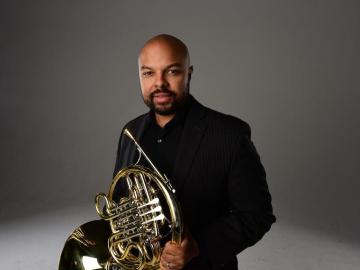Hal Sundt on Writing About Pythons and Amusement Parks
April 15, 2020
Hillary Hempstead

Hal Sundt ’12, visiting assistant professor of rhetoric and composition, teaches literary journalism and academic essay writing, and his writing has appeared in publications including the New York Times Magazine, the Ringer, and the American Scholar. Sundt writes about topics as disparate as python hunting and the world of amusement parks, and his most recent essay ‘‘Pythons of the Everglades’’ takes readers along on a journey deep into a swamp with a python hunter. Another piece detailing the state of amusement parks was recognized on Longform, an aggregator of top literary journalism stories.
We asked Sundt about his inspiration for writing about these topics.
Your writing covers a wide range of subject matter: pythons, orchids, amusement parks, and even Norman doors. How do you choose your topics?
My favorite book is The Orchid Thief by Susan Orlean. I picked up the book after graduate school, when I was having a crisis of interest. I used to love basketball; it used to be my life. Then, by the time I was around 25, my interest was starting to wane. I didn’t really know what I was interested in—which is a problem when you want to be a nonfiction writer and don’t have strong interests. A professor recommended that I read this book, which I was initially skeptical about, because I don’t have a particular interest in flowers. But it’s actually about a writer who’s trying to make sense of the fact that they don’t know what their passion is.
In the book, Orlean says, “I read lots of local newspapers and particularly the shortest articles in them, and most particularly any articles that are full of words in combinations that are arresting.” What she does in her writing is look for tension—something that doesn't quite belong. So I’m drawn to subjects that at first glance don’t seem super important but that I can find meaning in.
What made you want to write about pythons?
I took Susan Orlean’s advice and went looking through local newspapers online for “words in combinations that are arresting.” I found a story about a woman in Northeast Ohio who had a boa constrictor that attacked her. I first tried pursuing a story about it, and at that time the story didn’t take. A few months later, I went to the swamplands to write a story about orchids, and the guide I was with mentioned pythons in the swamps, and I thought, ‘snakes keep coming up.’ Then, what really sealed it was a meeting with Professor of Biology Mary Garvin. I had a question for her about something flower related, and Mary mentioned a python link in the conversation. I thought, OK this seems interesting and unusual. It percolated, and then I decided to pursue it.
What was it like going to the Everglades to find pythons?
It was pretty scary. I didn’t really know at first what I was getting into. It wasn’t until the morning of my flight that I thought—’what does someone do when they go hunting for pythons in the Everglades?’ I think why I write about topics like these is that it makes me a more adventurous version of myself. I’m introverted, but when I’m working on a story it gets me to talk with people whom I wouldn’t normally talk with or it takes me to new places.
What makes for a story that’s worth pursuing?
For me, a topic should have lots of different dynamics. For the story about amusement parks, there’s the history of theme parks, the designers, what it’s like to visit one—there are lots of dimensions to it. But the number one thing is, and the students in my class will know that I’m going to say this word, is that a great subject has tension. It doesn’t mean that there’s tension in a negative way, it just means that there are two things that don’t seemingly connect or make sense at first glance.
What are you working on right now?
I’m working on pitching this story about this really old plane developed for the United States Air Force, the A-10 Thunderbolt II—nicknamed the “Warthog.” The military has been trying to replace it for a while, but they haven’t been able to because it’s still really good at its job. I’m really interested in it as a relic. It’s nearly 50 years old and continues to be successful. I’m particularly interested in the engineers who help maintain it; the engineers use 3D modeling to keep this old plane up in the air. I’m interested in the tension between old and new.
Tags:
You may also like…
Peter Takács—A Half-Century Celebrated
May 4, 2024
This spring marks the official conclusion of Takács’ tenure, after an incredible 48 years of teaching. Many of his former students from around the world are set to convene for a celebratory concert in Warner Concert Hall on May 12
Oberlin Presents Grammy-Winning Imani Winds in Concert
February 28, 2024
When flutist Brandon Patrick George ’08 attended Imani Winds’ Artist Recital Series performance back in 2007, he never imagined that he would one day sit in the flute chair. “Being...
David Byrd-Marrow Appointed Horn Faculty at Oberlin Conservatory
February 7, 2024
Versatile American horn player David Byrd-Marrow has been appointed to the tenure-track horn professor position at Oberlin Conservatory. He brings an expansive range of experience and repertoire to the role.


